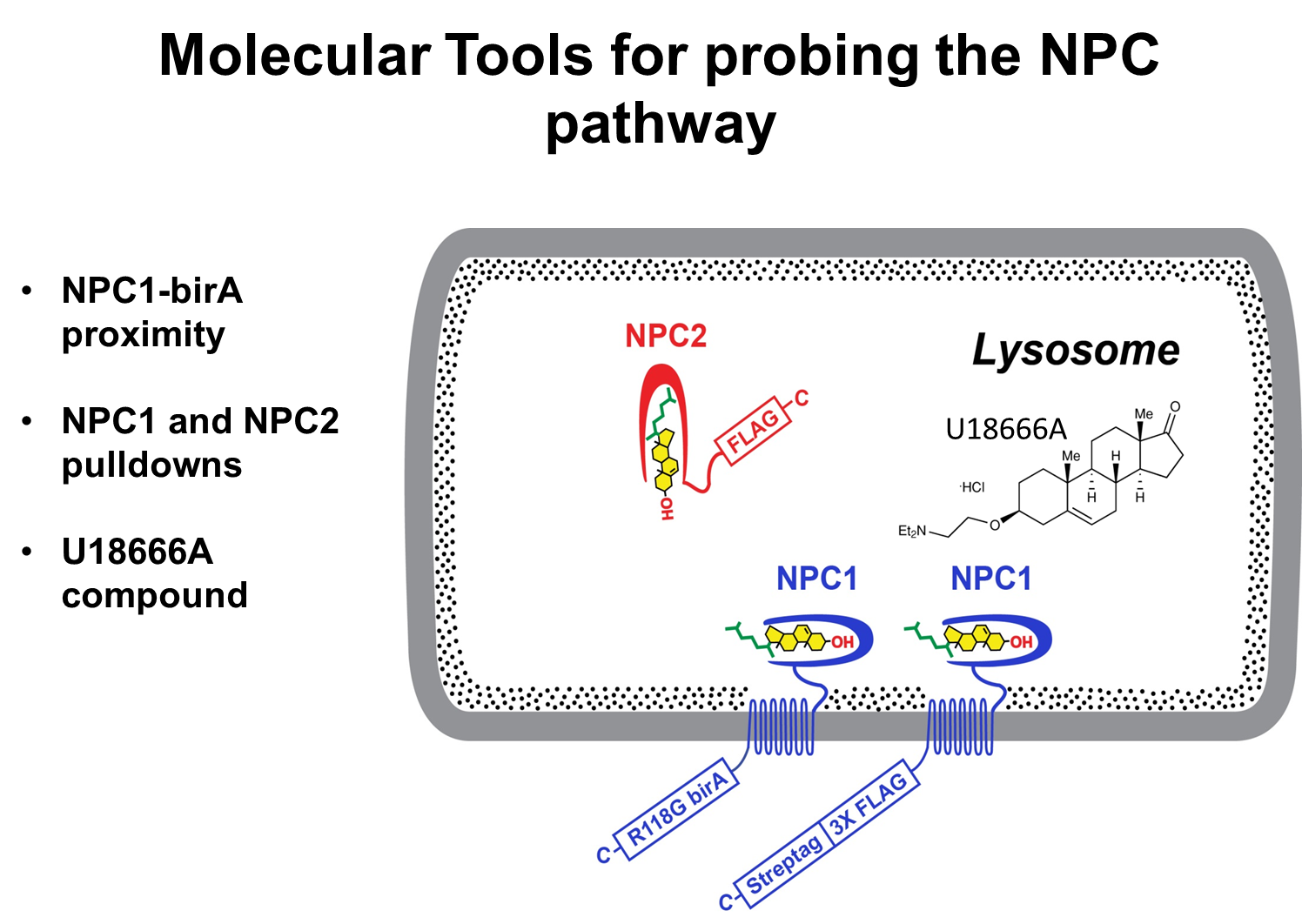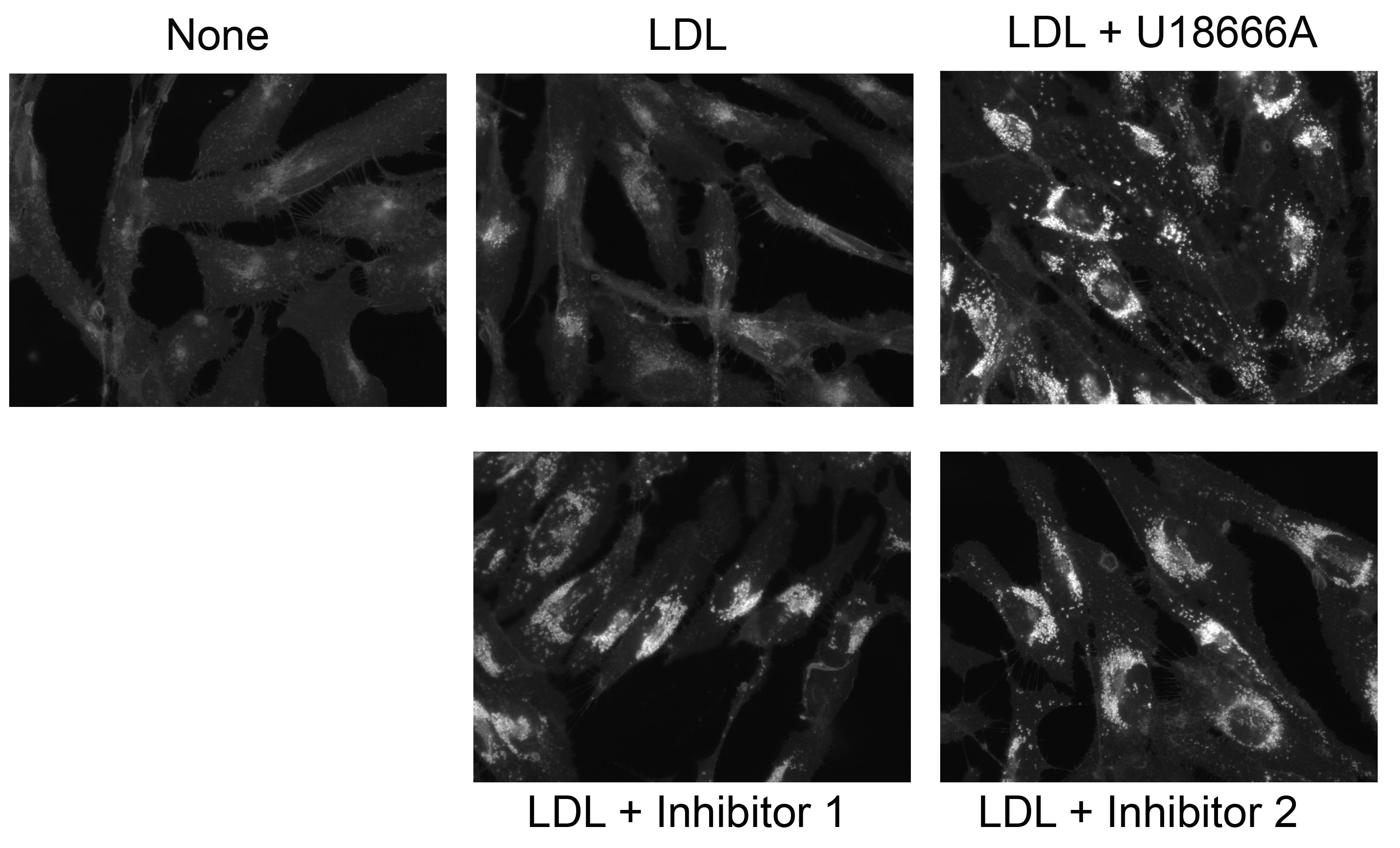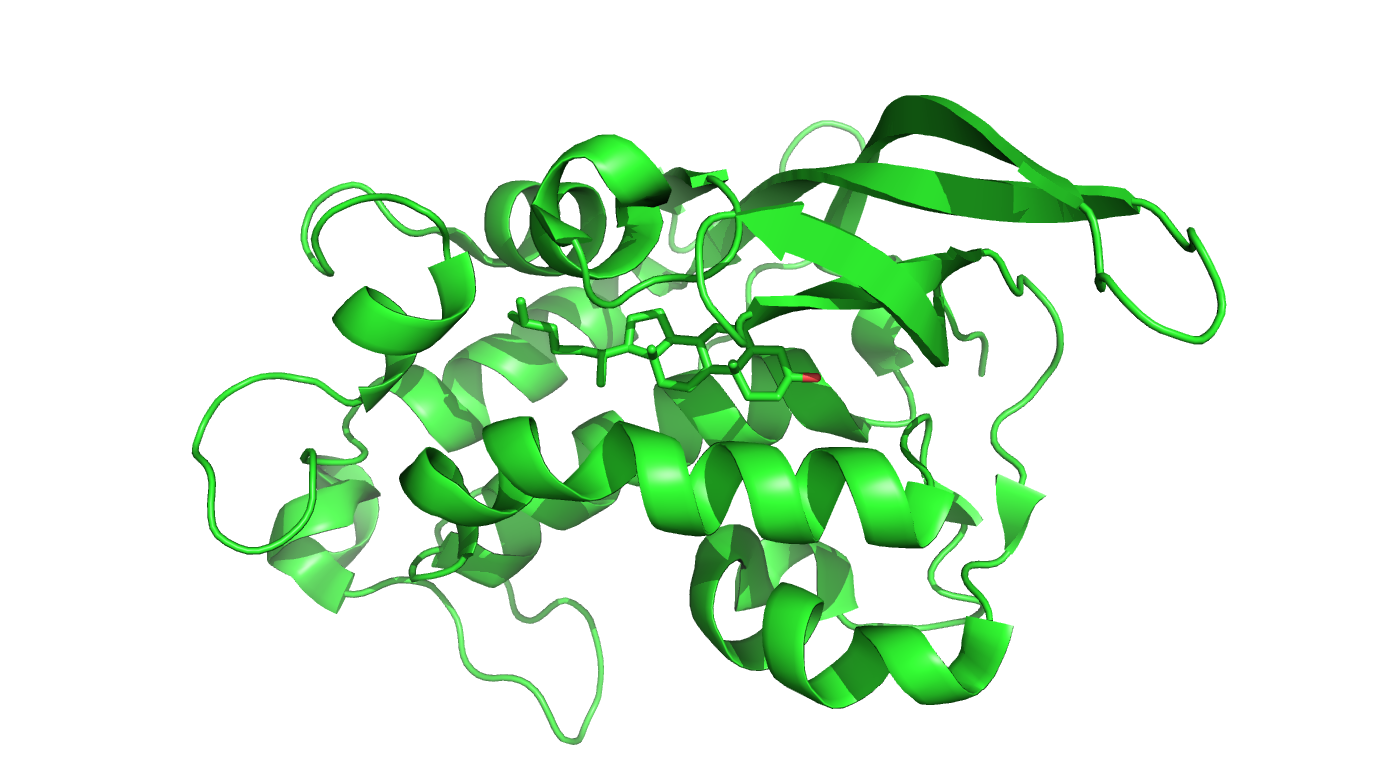About This Project
Niemann-Pick disease, Type C1 (NPC1) is a gene that all mammals have. Mutations in the NPC1 gene can cause cholesterol and sphingolipids to accumulate in lysosomes. Patients with NPC disease cannot get Ebola or HIV infections. The role that NPC1 plays in Ebola infection is still unknown. We hypothesize that proteins that physically interact with NPC1 could be involved in cholesterol and lipid transport and/or Ebola and HIV infection.Ask the Scientists
Join The DiscussionWhat is the context of this research?
Niemann-Pick, type C1 (NPC1) disease is an autosomal recessive disease that results in accumulation of cholesterol and other lipids within lysosomes. Although it is known that NPC1 is absolutely required for Ebola and HIV infection, the mechanism is still unknown. NPC1 is a transmembrane protein in the lysosome. Membrane proteins are notoriously difficult to work with. We have developed a system to pull out proteins that interact with NPC1. Identification of physically interacting proteins could lead to understanding the mechanism of cholesterol transport and/or Ebola and HIV infection.
What is the significance of this project?
NPC disease leads to liver dysfunction along with multiple neurological symptoms such as developmental delay due to accumulation of cholesterol. Children with NPC disease cannot get Ebola or HIV. NPC1 is absolutely required for these viral infections. This work could lead to important therapies for all three of these aforementioned diseases.
What are the goals of the project?
The immediate goal of this project is to find bona fide interactors of the NPC1 protein. Once we have identified these targets, functional assays will be performed to understand whether those proteins are involved in cholesterol metabolism and/or in viral infections. Understanding the mechanisms that NPC1 uses to allow infections and cholesterol transport can lead to multiple important therapeutic targets and may help solve all of these diseases.
Budget
Using our assays, we will identify several NPC1 interactors. Each one of these will need to be tested to determine what they do in relation to these diseases. We can use siRNAs like molecular scissors that remove those interactors from the cell. Our assays will tell us what the function of that interactor is and if it is important in these various diseases. Antibodies allow us to determine the levels of these proteins within cells. We can tell if the molecular scissors worked and whether their amounts are modulated by various treatments. We will be able to determine which pathway these inter-actors are affecting. If we find bona fide partners, they will have to undergo functional tests to determine if they are affecting viral infection and/or cholesterol metabolism. Anything we find will be important. This has the potential to solve three very important problems in biology: how Ebola and HIV infection works on the molecular level; and how cholesterol is transported around the cell.
Meet the Team
Team Bio
I originally went to school to become a medical doctor. While at Cornell University for my Bachelors Degree, I did research in a lab that focused on folate research and birth defects. I became obsessed with science and decided to shift my focus on asking the questions that I thought were important. I received my PhD from Cornell University and then started a postdoctoral position in the Nobel Prize winning Brown and Goldstein lab. This project is especially important to me because it could help so many people. Not only those who are born with NPC disease, but those who have become infected with Ebola or HIV. The implications of understanding what proteins interact with NPC1 are incredibly important.Donald D Anderson, Ph.D
I originally went to school to become a medical doctor. While at Cornell University for my Bachelors Degree, I did research in a lab that focused on folate research and birth defects. I became obsessed with science and decided to shift my focus on asking the questions that I thought were important. I received my PhD from Cornell University and then started a postdoctoral position at UT Southwestern. This project is especially important to me because it could help so many people. Not only those who are born with NPC disease, but those who have become infected with Ebola or HIV. The implications of understanding what proteins interact with NPC1 are incredibly important.
Press and Media
Click here to see press releases about Dr. Anderson's work. Click here to see Dr. Anderson's LinkedIn account. Click here to see more about Dr. AndersonClick here to see Dr. Anderson's citation list.
Ebola and HIV hijack NPC1, a gene that exists in all mammals, in order to infect cells. Children born without functional NPC1 genes cannot get these infections. Unfortunately they have neurological problems along with developmental delay and liver dysfunction. Studying NPC1 can help us understand all of these pathologies.

Additional Information

We have developed several tools in order to find NPC1 and NPC2 binding partners. U18666A compound mimics NPC disease. U18666A compound is another tool we can use to probe this system.

Filipin staining is a way to visualize cholesterol in cells. In the absence of LDL (None) little cholesterol can be seen in lysosomes. Upon addition of LDL (LDL) lysosomes are more visible than in the none control. LDL + 1uM U18886A or other proprietary compounds traps cholesterol in the lysosomes and mimics NPC deficient cells.

Project Backers
- 3Backers
- 3%Funded
- $165Total Donations
- $55.00Average Donation
